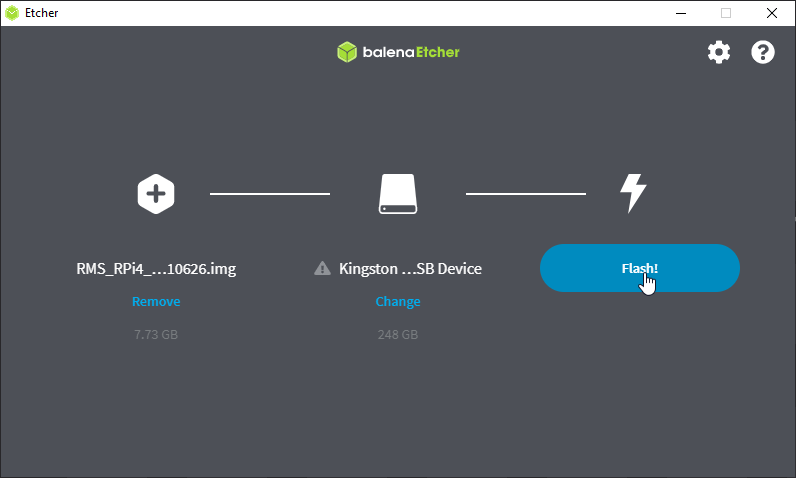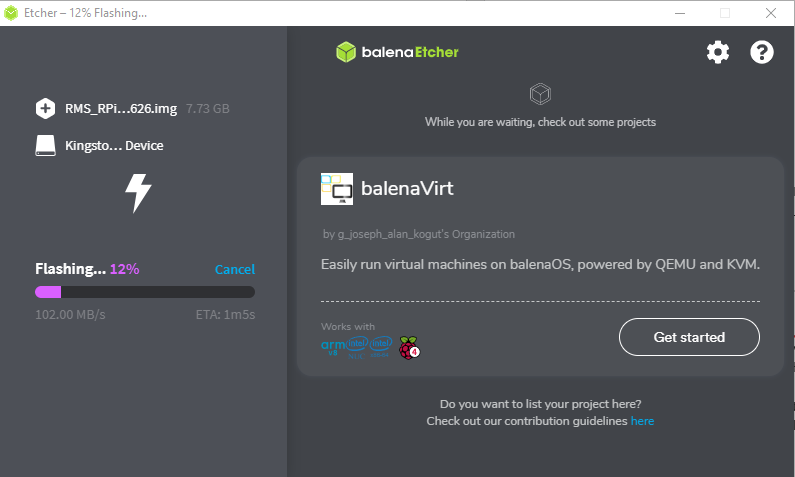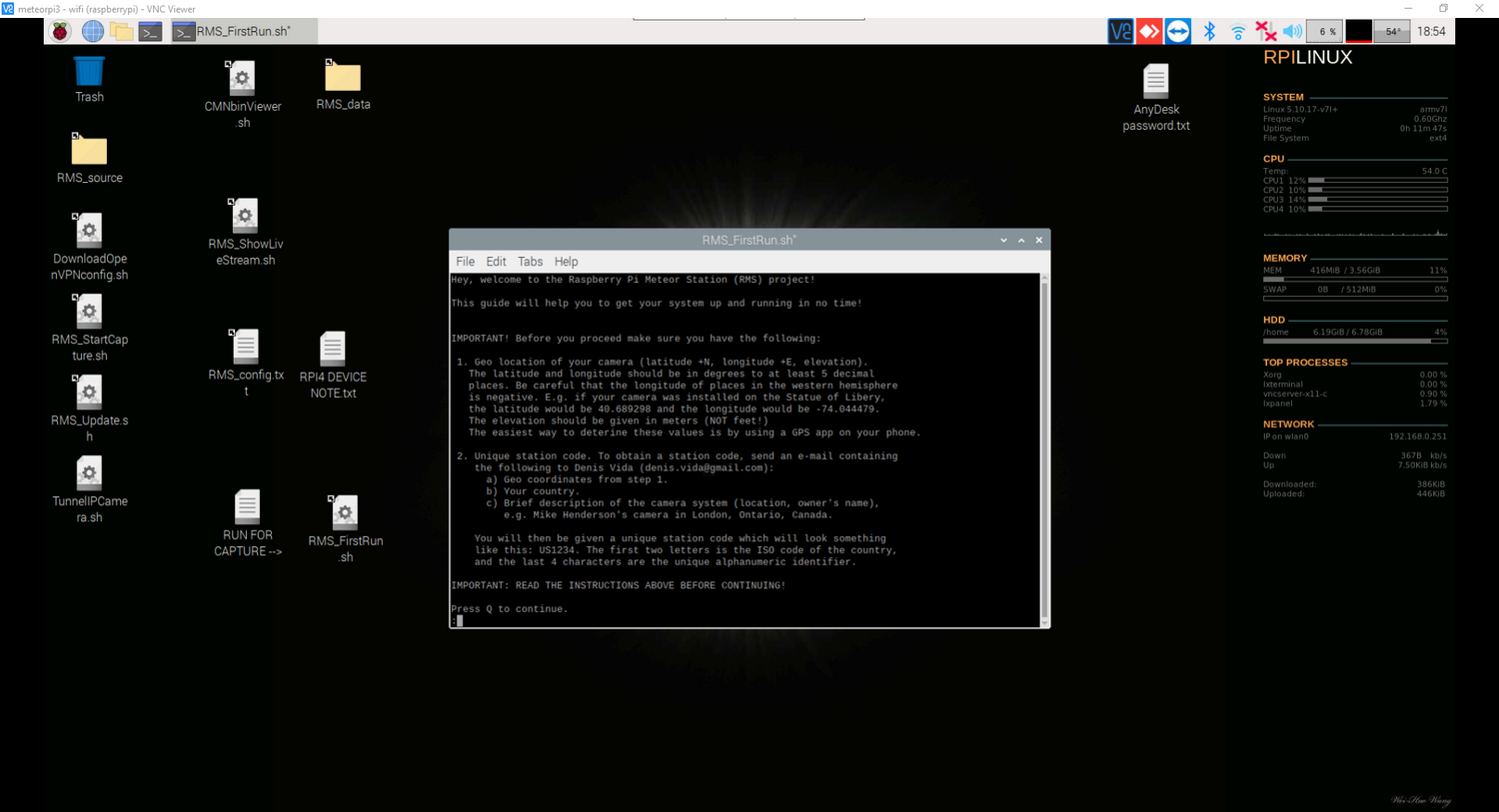Installing OS onto a Raspberry Pi: Difference between revisions
RadimStano (talk | contribs) |
RadimStano (talk | contribs) |
||
| (9 intermediate revisions by 2 users not shown) | |||
| Line 1: | Line 1: | ||
Ahoj! In this section, you will flash (or install if you wish) an OS Linux onto your SD card or USB flash key and boot your Raspberry Pi for the first time. | Ahoj! In this section, you will flash (or install if you wish) an OS Linux onto your SD card or USB flash key and boot your Raspberry Pi for the first time. | ||
| Line 7: | Line 6: | ||
''' The process is the same for an microSD card or a USB flash key, just the target will differ. ''' | ''' The process is the same for an microSD card or a USB flash key, just the target will differ. ''' | ||
# Download the | # Download the image for your Raspberry Pi model from the list below and save it on the PC somewhere. | ||
# Download the [https://www.balena.io/etcher/ BalenaEtcher], if you haven’t done it yet. | #:* If you have '''Raspberry Pi 4B''' we recommend you will download and use [https://globalmeteornetwork.org/projects/sd_card_images/RMS_RPi4Bullseye_image_20231213.img.xz this image]. It is based on Bullseye 64-bit. | ||
#:* If you have '''Raspberry Pi 5''' download [https://globalmeteornetwork.org/projects/sd_card_images/RMS_RPi5Bookworm_image_20240910.img.xz this image]. It is based on Bookworm 64-bit and this is the only image working with Raspberry Pi 5. '''Please note''' that it can be used for Raspberry Pi 4B, but there are some things not working there (Anydesk, RTC module) and we see no advantage in running this image on Raspberry Pi 4B at the moment. | |||
#:* '''For archive purposes''', you can download the previous 32-bit image for Raspberry Pi 4B based on Buster 32-bit [https://globalmeteornetwork.org/projects/sd_card_images/RMS_RPi4_image_20230804.img.xz here]. This image is not maintained and you should use it only if you really need it and know what you are doing. | |||
#:* In case of trouble with the images please contact the technical support group https://globalmeteornetwork.groups.io/g/techsupport. [https://globalmeteornetwork.org/wiki/index.php?title=Images_checksums Here] you can find a list of checksums and sizes of images. | |||
# Download the [https://www.balena.io/etcher/ BalenaEtcher], if you haven’t done it yet. The process shown below uses BalenaEtcher as it is the simplest tool for beginners, but if you are familiar with another USB flashing utility (e.g. Rufus <s>or Raspberry Pi Imager</s> - we do not recommend the use of Pi Imager as it caused a lot of faulty images to be burnt lately) feel free to use these. But if they don’t work for you, please fall back to BalenaEtcher and the process documented below. | |||
# Insert a microSD card or a USB flash disk into your PC, and note the letter it was assigned. | # Insert a microSD card or a USB flash disk into your PC, and note the letter it was assigned. | ||
# Run BalenaEtcher, and flash the image file onto your microSD card/USB flash disk: Select Flash from file, find | # Run BalenaEtcher, and flash the image file onto your microSD card/USB flash disk: Select Flash from file, find the image file and select it. As Target select your USB flash disk. Normally the system disks are hidden but verify the name, letter and size of your USB flash disk to be sure you have the correct target. Click Flash, once again verify the target and confirm it. Wait for the process to finish. (In case you will receive an error you may need to run BalenaEtcher as administrator) | ||
# Eject the USB flash disk in | # Eject the USB flash disk in Windows if necessary and then remove your microSD card/USB flash disk from your PC and insert it into your Raspberry Pi, which should be connected to a TV or Monitor, and have a keyboard and mouse connected. Power on a Raspberry Pi. Make sure that a microSD card is not inserted. | ||
# Wait for the boot. If the boot takes too long to occur, please have a look at the next section. If it booted successfully, follow the on-screen instructions. | # Wait for the boot. If the boot takes too long to occur, please have a look at the next section. If it booted successfully, follow the on-screen instructions. | ||
| Line 37: | Line 40: | ||
= [OPTIONAL] Install the software from scratch = | = [OPTIONAL] Install the software from scratch = | ||
''' This is for users who wish to perform more advanced tasks, if you have gone for the previous section, do not continue with the sections below ''' | ''' This is for users who wish to perform more advanced tasks, if you have gone for the previous section, do not continue with the sections below ''' | ||
'''Note: if you're setting up a Raspberry Pi you should use the prebuilt image as this comes with all necessary software installed and is ready to use.'''. If you really really '''really''' do want to install on the RPi from scratch, you can follow the instructions | '''Note: if you're setting up a Raspberry Pi you should use the prebuilt image as this comes with all necessary software installed and is ready to use.'''. If you really really '''really''' do want to install on the RPi from scratch, you can follow the instructions on [https://globalmeteornetwork.org/wiki/index.php?title=Advanced_RMS_installations_and_Multi-camera_support this page]. | ||
You are now done with this section and now you are going to focus your camera and put all bits and pieces together for the first test. Exciting, isn't it? [https://globalmeteornetwork.org/wiki/index.php?title=Build_%26_Install_%26_Setup_your_camera_-_The_complete_how-to Back to the signpost page.] | You are now done with this section and now you are going to focus your camera and put all bits and pieces together for the first test. Exciting, isn't it? [https://globalmeteornetwork.org/wiki/index.php?title=Build_%26_Install_%26_Setup_your_camera_-_The_complete_how-to Back to the signpost page.] | ||
Revision as of 17:03, 10 October 2024
Ahoj! In this section, you will flash (or install if you wish) an OS Linux onto your SD card or USB flash key and boot your Raspberry Pi for the first time.
Install OS by flashing the image
Flash image onto a microSD card/USB flash disk
The process is the same for an microSD card or a USB flash key, just the target will differ.
- Download the image for your Raspberry Pi model from the list below and save it on the PC somewhere.
- If you have Raspberry Pi 4B we recommend you will download and use this image. It is based on Bullseye 64-bit.
- If you have Raspberry Pi 5 download this image. It is based on Bookworm 64-bit and this is the only image working with Raspberry Pi 5. Please note that it can be used for Raspberry Pi 4B, but there are some things not working there (Anydesk, RTC module) and we see no advantage in running this image on Raspberry Pi 4B at the moment.
- For archive purposes, you can download the previous 32-bit image for Raspberry Pi 4B based on Buster 32-bit here. This image is not maintained and you should use it only if you really need it and know what you are doing.
- In case of trouble with the images please contact the technical support group https://globalmeteornetwork.groups.io/g/techsupport. Here you can find a list of checksums and sizes of images.
- Download the BalenaEtcher, if you haven’t done it yet. The process shown below uses BalenaEtcher as it is the simplest tool for beginners, but if you are familiar with another USB flashing utility (e.g. Rufus
or Raspberry Pi Imager- we do not recommend the use of Pi Imager as it caused a lot of faulty images to be burnt lately) feel free to use these. But if they don’t work for you, please fall back to BalenaEtcher and the process documented below. - Insert a microSD card or a USB flash disk into your PC, and note the letter it was assigned.
- Run BalenaEtcher, and flash the image file onto your microSD card/USB flash disk: Select Flash from file, find the image file and select it. As Target select your USB flash disk. Normally the system disks are hidden but verify the name, letter and size of your USB flash disk to be sure you have the correct target. Click Flash, once again verify the target and confirm it. Wait for the process to finish. (In case you will receive an error you may need to run BalenaEtcher as administrator)
- Eject the USB flash disk in Windows if necessary and then remove your microSD card/USB flash disk from your PC and insert it into your Raspberry Pi, which should be connected to a TV or Monitor, and have a keyboard and mouse connected. Power on a Raspberry Pi. Make sure that a microSD card is not inserted.
- Wait for the boot. If the boot takes too long to occur, please have a look at the next section. If it booted successfully, follow the on-screen instructions.
This is what the selection should look like:
This is what the process should look like:
Pre-2021 Raspberry Pi 4 Bootloader update - an USB flash disk ONLY
If you encountered a problem booting Raspberry Pi 4 from a USB device (common for all USB devices, not only flash disks), the most probable reason is that your Raspberry Pi 4 is from an older batch and its bootloader has to be updated. The procedure is simple and you will need a blank small MicroSD card to continue, the data are around 1MB in size, so any small microSD card will do the job. The process is nicely described in the raspberry pi official documentation.
- In case you are looking for more extensive USB booting guide click here
- the pre-installed RMS software images incorporate an auto-updating feature, so that the RMS software is updated to the current release whenever your Raspberry Pi RMS is booted. This way, your station is always running the most recent set of updates.
The first boot
This is how the first boot of RMS linux looks like:
Now it is good time to send an email to denis.vida@gmail.com with short introduction, stating that you are building the camera, stating from which country you are and asking for the station code. You will need it later when setting up the RMS software once your camera is fully installed and positioned.
[OPTIONAL] Install the software from scratch
This is for users who wish to perform more advanced tasks, if you have gone for the previous section, do not continue with the sections below Note: if you're setting up a Raspberry Pi you should use the prebuilt image as this comes with all necessary software installed and is ready to use.. If you really really really do want to install on the RPi from scratch, you can follow the instructions on this page.
You are now done with this section and now you are going to focus your camera and put all bits and pieces together for the first test. Exciting, isn't it? Back to the signpost page.


